Embark on a transformative journey with the Ketogains method—a no-nonsense approach that has garnered a thriving community of over one hundred thousand members, all witnessing remarkable results.
This article delves into the essence of the Ketogains’ widely acclaimed system, unearthing how it orchestrates a symphony between a nutrient-rich diet and strategic training. Explore the pivotal role of protein, the wisdom in limiting carbs, and the lever of fat to sculpt your ideal physique while shedding fat.
With Ketogains, unveil a sustainable pathway to not just achieving but relishing in the zenith of metabolic health and physical prowess.
What Is KetoGains?
KetoGains was founded by Tyler Cartwright and Luis Villasenor to teach people interested in metabolic health the importance of a nutrient-dense diet and training.
The KetoGains macros tend to align with our data analysis around nutrient density and satiety. You can check out my chat with Luis about the key principles of KetoGains and how they differ from popular keto in my interview on the Optimising Nutrition podcast here.
Ketogains focuses more on resistance training, while our Macros Masterclass and Micros Masterclass focus on dialling in macronutrients and micronutrients. However, as you will see, there is a lot of overlap in the fundamental principles of our programs.
KetoGains Principle #1: Protein as a Goal
The primary pillar of the Ketogains system is getting adequate protein, similar to what we teach in our Macros Masterclass. Protein is not only critical for building muscle and losing fat sustainably, but protein-rich foods are also relatively nutrient-dense.
As shown in the chart below from our satiety analysis, a higher percentage of dietary energy from protein improves satiety and keeps us from overeating. People who consume less energy from fat and carbs and prioritise protein tend to consume fewer calories.
Adequate protein becomes even more critical when you’re losing weight. As your calorie deficit becomes more significant and goes on for longer, your need for protein increases so you can avoid losing any muscle.
If you are doing heavy resistance training to chase the gains, you will require even more. You can calculate your protein intake based on your activity using our macro calculator or the KetoGains macro calculator.
In practice, however, it’s difficult to over-consume protein because foods with a high protein percentage are so satiating.
Our bodies can convert ‘excess protein’ to glucose in a process known as gluconeogenesis. However, it’s relatively labour-intensive to do so, and it does not instantly turn to chocolate cake in your bloodstream.
If you’d like to learn more on gluconeogenesis, check out, Why Does My Blood Sugar Drop (or Rise) After Eating Protein?
Between 25% and 35% of the total calories consumed from protein are lost when it’s converted into energy to be used in your body, or in muscle protein synthesis to build and repair your muscles. In contrast, we only lose around 11% of energy when converting carbs into usable fuel and 3% of energy from fat. For more on this, check out, Oxidative Priority: The Key to Unlocking Your Body Fat Stores.
You can think of opting for protein as resistance training for your metabolism.
Targeting the Minimum Effective Dose of Nutrition
If your goal is fat loss, you need to find a way to get all the amino acids, vitamins and minerals into your limited calorie budget. The good news here is that nutrient density and a higher protein % go hand in hand. As shown in the chart below, from our analysis of Optimiser data, a higher protein percentage (protein %) correlates with a higher diet quality score, at least up to about 50%.
Can You Build Muscle on Keto?
The short answer to this is, ‘Yes, but only if you have enough protein.’
Many people start ‘keto’ by upping their fat and reducing their carbs and even protein in pursuit of higher ketone levels. The ‘standard keto macro split’ for keto is 70% fat, 25% protein, and 5% net carbs (as shown in the pie chart below). However, our bodies rely heavily on protein (mostly) and carbs to recover from intense activity.
If you’re consuming a minimal amount of carbohydrates, your body can make the glucose it needs for building muscle on keto from protein. But you may need to compensate by eating more protein to give your body something to turn into glucose.
Deep ketosis is a catabolic state where insulin levels are extremely low to allow energy to flow out of storage. But if you want to build muscle, you’ll need to prioritise adequate protein to ensure you have the building blocks required. Hence, you may need to forgo the hopes of high keto levels if you also want to chase the gains.
KetoGains Principle #2: Carbs as a Limit
The KetoGains approach with limited carbohydrate intake works well for most people with some level of insulin resistance and plenty of excess glucose stored in their bodies.
Incidences of metabolic syndrome continue to increase, and over 11.3% of the U.S. population had been diagnosed with diabetes as of 2019. Most people don’t require a high carb intake to fuel their workouts. However, if you are already super lean with low blood sugar, you may need to add some carbohydrates around workouts.
KetoGains recommends keeping your carb intake relatively low to fuel your activity. This equates to around 80-200 calories from carbs, which allows you to draw down on your fat stores and unload the extra energy you have on board. If you’re more active, you will consume more carbs towards the top of this range and vice versa.
This lower-carb recommendation aligns with maximum nutrient density, as shown in the chart below.
Why Is Keto Not Good Long Term?
When it comes to performance, keto can have some negative implications and may inhibit long-term progress. When the body goes without carbs for long periods, the thyroid has been shown to slow in function. In addition, a strict keto diet can mimic fasting to a degree, which is a stressor. Coupling this with a calorie deficit and training can make it difficult for the body to keep up and recover.
On another note, carbs from fibrous and even some non-fibrous vegetables provide more harder-to-find nutrients we can’t get from animal foods. Conversely, consuming large amounts of fats from sources like butter and MCT oil provides minimal micronutrients to satisfy your cravings. Thus, hardcore keto has some hardcore detriments if you’re not careful.
However, KetoGain’s focus on plenty of protein and carbs from non-starchy vegetables is a perfect starting point for most people.
Keto Gains Principle #3: Fat as a Lever
People have started to open their hearts to dietary fat in recent years and are recovering from their extreme fat fears. While we require some essential fatty acids for gallbladder function, fat-soluble vitamin absorption, hormone synthesis, and making cell membranes, we don’t need that much fat to thrive, especially if we already have plenty of unwanted fat stored on our bodies.
Considering fat comes in at nine calories per gram, we really don’t need too much if we’re trying to lose weight, especially if it’s from a processed, low-nutrient source. So, our fat intake should vary depending on our calorie goal. Thus, the third principle of KetoGains is to use fat as a lever to fill in our remaining total calories.
As we consume more of our energy from fat and carbs and less from protein, we tend to eat more. Animal protein sources are high in essential nutrients like amino acids, vitamins, minerals, and fatty acids, which are satiating.
When we fill our glucose and fat fuel tanks instead, our nutrient density decreases, and we flood our bodies with pure energy. In this case, we use the energy from our food less efficiently.
The combination of fat and carbs is the basic signature of modern processed junk food. Our diet consists of more energy from fat and carbs (hence a lower protein %), so we simply eat more.
While fat is an excellent source of slow-burning fuel, our satiety analysis shows that a higher dietary fat makes it harder to control our overall energy intake and lose body fat. Fat isolates—even the ‘paleo-approved’ ones like olive, coconut, and avocado oil—are low in micronutrients, which doesn’t necessarily help with satiation.
As shown in the chart below, from our satiety analysis, we eat more once our dietary fat increases above 40%. Hence, to get the energy you need, but not so much that you don’t lose weight, you need to ‘use fat as a lever’ and find the fat intake that aligns with your goals.
Hence, if you’re looking to gain weight, add muscle, or take on some endurance exercise, it may be beneficial to prioritise energy-dense foods and lower your protein percentage so you can fuel your activity.
If you are not an endurance athlete and want to use your body fat for fuel, like the majority of us living in a sedentary environment full of hyper-palatable food, you may want to dial back your dietary fat and carbs as we do in our Macros Masterclass and prioritise more satiating foods with a higher protein:energy ratio.
Micronutrients
Once you’ve determined your macros and get the hang of using fat as a lever to manage your energy intake, the next step is to ensure you’re getting adequate amounts of micronutrients.
Our micronutrients, vitamins, minerals, amino acids, and essential fatty acids, fuel our metabolism and catalyse every reaction within our bodies. If we don’t have enough of these ‘raw ingredients’, our bodies tend to send us in search of more by ramping up our appetite and making us feel hungry.
Unless you like eating a lot of organ meat, shellfish, or raw meat, you’ll likely benefit from consuming some non-starchy veggies to get some of the harder-to-find essential vitamins and minerals that animal foods do not provide much of.
Unfortunately, using something like Flexible Dieting or If It Fits Your Macros (IIFYM), where you’re only focusing on macros, fails to consider micronutrients. Someone who uses nutrient-dense whole foods with one of these approaches might have a completely different experience than someone relying on processed foods.
Chronic energy restriction without considering micronutrients can lead to nutrient deficiencies and associated diseases, a lack of energy, increased hunger, rebound bingeing from cravings, and even death.
The percentage of protein in your diet has the most significant effect on satiety. However, your intake of vitamins and minerals is also critical. Getting adequate minerals is especially important for:
- avoiding the symptoms of the ‘keto flu’;
- reversing insulin resistance and minimising the amount of basal insulin circulating throughout your body;
- metabolising your fat, protein, and carbs into usable energy; and
- maximising athletic performance.
Active people tend to sweat a lot and need more electrolytes, especially sodium. If you struggle to get enough salt, you can check out the high-salt electrolytes KetoGains recommends, LMNT.
Again, our satiety analysis suggests that people who consume foods and meals that contain more minerals tend to have fewer cravings and consume less food overall. For more info on this, check out The Effect of Minerals on Hunger and Satiety.
Sodium
A low-carb diet with less processed food contains less salt, so you may need to ‘add salt to taste’. Based on our analysis, an ideal sodium intake seems to be at least four grams per day. However, if you’re active and sweat a lot, you may need even more.
Magnesium
The Estimated Average Requirement (EAR) for magnesium is 0.35 g per day, and the Daily Recommended Intake (DRI) is 0.42 g per day for men. However, consuming levels greater than the EAR and DRI from food seems beneficial. Interestingly, our analysis has shown that people have the most control over their cravings when consuming upwards of 1.25 g/per day (men) and 1.0 g per day (women). That’s nearly 300% of the DRI!
Potassium
Potassium could be the most neglected nutrient in our food system, and officials have deemed it a ‘nutrient of public health concern’. Less than 2% of Americans consume acceptable intakes of potassium, with very few people meeting the Adequate Intake (AI) of 3.4 g per day or the Daily Recommended Intake (DRI) of 3.8 g. Per our analysis, even higher levels may provide more benefits.
While supplements can play a role if allergies, sensitivities or intolerances restrict your diet, it’s ideal to obtain as many nutrients from whole foods as possible and top up with supplements only if necessary.
What to Track
We can only manage a handful of things at once.
‘If everything is a priority, nothing is a priority.’
Rather than tracking everything simultaneously, we must determine a few of the most important things to monitor to avoid overwhelm and continue on track towards our goals.
In the context of losing fat and gaining muscle, the best things to track are:
- weight and body fat,
- macros and calories,
- micronutrients, and
- performance (e.g., the weight on the bar or the time it takes to run a mile).
Weight and Body Fat
Most people want to have the most energy, the least body fat, and look good naked.
While it’s easy to track and lose body weight, it’s more optimal to lose body fat and preserve muscle.
There are many ways to measure body fat, whether it be DEXA, comparison photos, bioimpedance scales, Skulpt, or the Navy Method. To some degree, they are all inaccurate but are helpful to measure your long-term trends and progress.
You can certainly do your head in by focusing on the fluctuations in your weight or body fat from day to day. Hormones, hydration, minerals, and stress can all create significant changes! Thus, you want to see your overall average weight and body fat reduce toward your target levels.
In addition to weight, tracking your lean muscle mass and targeting more protein can be invaluable if you find you’re losing too much muscle. This is because muscles and organs are our most metabolically active tissue, meaning they keep us burning calories at rest.
People who successfully lose weight and keep it off tend to proactively manage their food intake, track their weight, and stay active! If you are not moving towards your goal, you might need to change one or all of these factors.
If you’re disciplined, you could lose 1% of your mass per week. However, 0.5% is a more realistic long-term goal. This is because our bodies can only release so much stored fat into circulation for energy. If we exceed this threshold, we begin dipping into our muscle stores for fuel.
If you are already lean, losing fat without losing muscle will be harder. You will need to pay even more attention to ensure you get adequate protein, and you may even benefit from some more carbs or fat and a slower rate of fat loss.
It’s not all about the weight on the scale. You can lose fat and gain muscle in what we know as ‘body recomposition’. This is the ‘Holy Grail’ of weight loss.
Macros and Calories
Many people don’t enjoy tracking their food, so we designed a range of food lists and recipes to help people improve from where they’re starting. You can use these lists to create your own nutrient-dense, fat-loss KetoGains-compliant meal plan.
If you want to look like a fitness model or you’re not getting your desired results, you may need to track your food until you start moving toward your goals. While the quality of your food is essential, the quantity you’re eating still matters. Calories in still equal calories out!
Initially, tracking your food in Cronometer can be extremely helpful to troubleshoot your diet and understand what you’re actually eating. Checking in periodically can be an excellent way to stay on track.
Performance, or the Weight on the Bar
Being stronger and having more muscle will improve your metabolic health, insulin sensitivity, and ability to burn fat effectively. Having more muscle mass ensures you not only glucose but fat as well. Lean muscle mass is a crucial predictor of longevity.
I recommend checking out the Ketogains 5×5 strength progression if you’re weight training. This applies progressive overload, where you add weight to the bar each time for compound lifts (like the squat, deadlift, bench press, overhead press, row, etc.). In time, this will make you stronger, and you will train your body to produce energy more efficiently.
If you’re new to resistance training or want to take it to the next level, we highly recommend checking out the KetoGains Bootcamp to lead you through combining nutrition and building lean muscle mass. Both of these are critically important for good metabolic health and longevity. Sharing the journey with like-minded people in a supportive community can also be motivating.
They have a beginner stream for people new to lifting and an intermediate option for people who already know their way around a barbell.
Other Things You Can Track
Most people have limited time and don’t want to live strictly by ALL the numbers and data. Unless this is your only hobby or you’re a professional athlete or fitness model, you may experience ‘analysis paralysis’ and throw in the towel due to being overwhelmed if you try to track too many things. Therefore, it’s ideal to pick a few measurements that are most useful and meaningful to you and focus on managing them.
There is no guarantee that more technology will help you reach your goals. In fact, some people seem more likely to gain weight if they use a wearable like a Fitbit. Instead of listening to their innate hunger cues, many people use food as a reward for being so active by eating back the calories the app has told them they burned.
So, keep it easy and find a few of the most relevant things to focus on. Don’t try to track too many things at once!
Blood Sugar
Your blood sugar and glucose control give great insight into your metabolic health. But blood sugar readings can come not only from the foods you eat or your metabolic health but from exercise and stress, too.
If you have diabetes, refining your food choices to normalise your blood sugars is essential. However, regularly tracking blood sugars is likely a waste of time and money for someone following a KetoGains style approach.
If you’re tracking your food, abiding by the macronutrient guidelines, and are actually adhering to the program, this should ensure you’re progressing, getting adequate protein, and lifting regularly. It just might take some time to see the results!
If your waking blood sugars are less than 100 mg/dL (5.6 mmol/L), there’s likely no use in worrying about them (unless you have Type-1 Diabetes, of course). But if your weight is plateauing and you’ve stopped moving towards your goals, you could use your blood glucose meter as a fuel gauge as we do in our Data-Driven Fasting challenges.
Blood Ketones
Unless you’re using therapeutic ketosis to manage something like epilepsy, cancer, Alzheimer’s, dementia, or Parkinson’s, measuring your blood ketones is likely a waste of time and money.
Some people get caught up chasing ‘optimal ketosis’. They do so by eating more dietary fat and less protein. However, while someone’s producing ketones, they’re coming from the breakdown of the dietary fat—not the body fat they want to lose. Thus, using ketones as a guide is precisely the opposite of what you need to gain strength, lose body fat and sustainably improve your long-term metabolic health.
For more on this, check out Keto Lie #1: ‘Optimal Ketosis’ is a Goal, and More Ketones are Better. The Lie that Started the Keto Movement.
Blood ketones increase when we don’t eat. But high ketone levels don’t necessarily mean you’re burning body fat. Your high ketones could be those three Bulletproof coffees, that MCT oil you drank down in the name of #keto, and those exogenous ketones you spent so much money on. Ketones from body fat come from a simple calorie deficit.
People who are physically fit or have been practising a low-carb diet for some time seem to have lower blood ketone levels despite eating keto. This could be because their bodies have adapted and use the ketone pathway more efficiently or burn more fat through non-ketogenic pathways.
Someone who is not metabolically healthy will see a higher ketone reading when they load up on exogenous ketones, butter, and MCT. Ketones are similar to blood sugar in the sense that they’re a source of fuel floating around in circulation. Thus, high ketones may be from the excess dietary fat they’re not burning that’s backing up in their bloodstream from lack of activity or poor metabolic health.
In someone with a healthy metabolism, the total energy from glucose, ketones, or free fatty acids circulating in the bloodstream is reasonably low. Their fuel tanks are empty and not overflowing.
The chart below shows more than three thousand data points of blood glucose and ketones from a range of people on a low-carb, ketogenic diet.
Having high blood ketones and high blood sugar simultaneously is not a good sign! Healthy people tend to have lower blood sugar and a moderate level of ketones. This indicates their fuel tanks are empty, and they are using their body fat for fuel. If blood glucose and blood ketones are high, the ketones they see on their meter likely come from dietary fat.
If you focus on nutrient-dense foods and meals that maximise satiety and strength building, your body will likely look after the rest. You will feel fuller because you’re getting the nutrients you require to function, and your body will not need to send you in search of more food.
Ketogains’ co-founder Tyler Cartwright lost nearly three hundred pounds without exceeding 0.4 mmol/L blood ketones on his ketone meter.
Waist
The Body Mass Index (BMI) is a biometric that looks at the relationship between body weight to height. However, BMI is notoriously problematic for people who carry more muscle.
Thus, your waist-to-height ratio (W:H) is a much better indication of the years of life you’ll lose from your poor health. Tracking your waist circumference weekly is a great way to ensure you’re moving towards optimal health.
Losing 0.5 to 1.0% of your current body weight per week is a reasonable target. Losing weight more quickly could result in muscle loss or rebound cravings as your body tries to fight what it thinks is starvation. Slow and steady wins the race!
Micronutrients
Focusing on nutrient-dense foods and meals will give you a good chance of getting optimal nutrition. You can also track your food in Cronometer to identify any micronutrients you’re not getting from your diet.
To help you learn what nutrients you’re not currently getting enough of, we’ve designed our free 7-Day Food Discovery Challenge to help you determine foods and meals that will fill in some of your nutrient gaps and get started on your journey of Nutritional Optimisation.
But What Should I Eat?
One of the biggest challenges we all have is making wise food choices and knowing which foods are even ‘wise’!
To avoid any frustration or confusion, we developed a wide range of food lists that will help you hit the Ketogains macro targets while getting plenty of micronutrients and satisfying your personal preferences.
If you’re just starting out with the KetoGains approach, then the blood sugar and fat loss list is probably the best place to start. If you want to get more aggressive, you can move to the fat loss or maximum nutrient density lists. Later you can try the lean bulking or athlete/bulking lists.
Recipe Books
Aside from our food lists, we’ve also created a suite of nutrient-dense recipe books complete with full micro and macronutrient details targeted towards specific goals.
Each recipe book contains a PDF with 33 beautifully pictured recipes and a secret index of 150 recipe links. Each recipe book aligns with a specific goal while maximising micronutrients.
Luis Villasenor’s recipes
Once you purchase the books, you will also gain access to all the relative Cronometer entries so you can build your own meal template, plan for the week, and ensure you maximise your Ketogains Boot Camp Results so you can rock #flexfriday.
Ketogains co-founder Luis Villasenor has generously contributed several recipes that he uses during an aggressive Protein Sparing Modified Fast (PSMF), including:
- Ketogains Pre-Workout (PWO) Coffee
- Ketogains PSMF Flan
- Ketogains Protein Pudding
- Ketogains Fudge
- Ketogains Ice Cream
Recipes Tailored to YOUR Goals
Similar to the food lists, if you’re starting out with KetoGains, you might find that the Blood sugar & Fat Loss NutriBoosters align best with your macros.
If you want to be more aggressive with your fat loss, you can check out the Fat Loss NutriBoosters or hardcore High Protein:Energy NutriBoosters.
Later, if you decide to transition to a lean bulking (or ‘gaintaining’ phase, as Luis calls it), you can use our Bodybuilders NutriBoosters or the Athletes & Bulking NutriBoosters if you want to get BIG quickly or are very active.















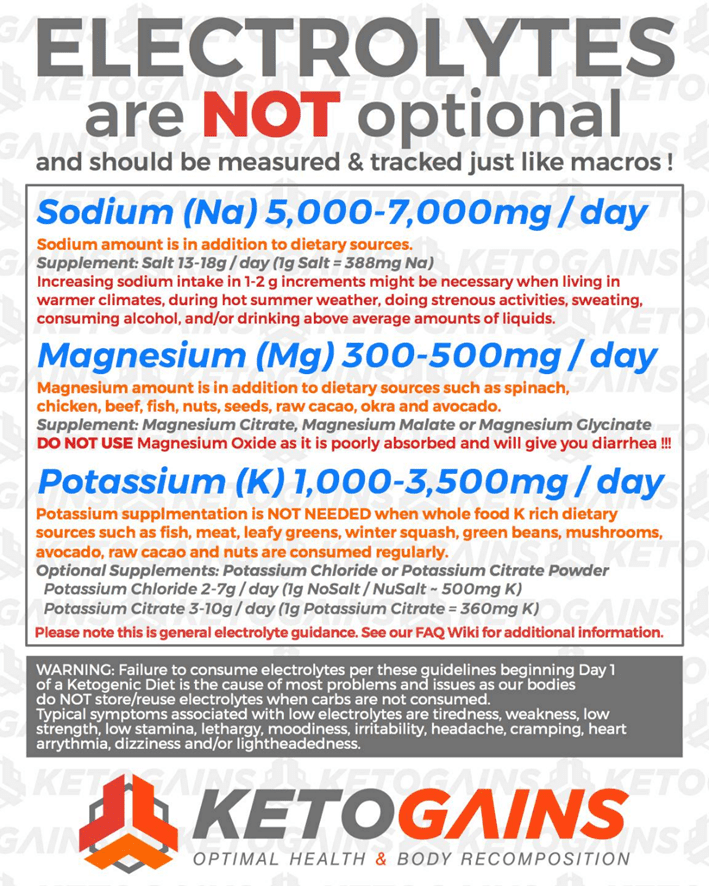


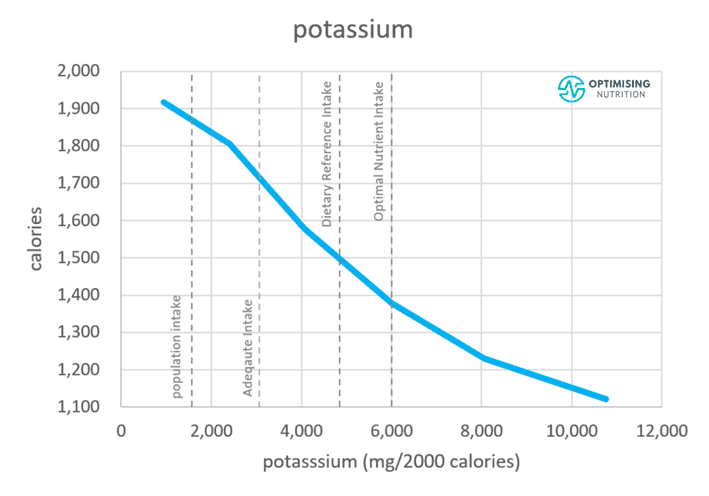




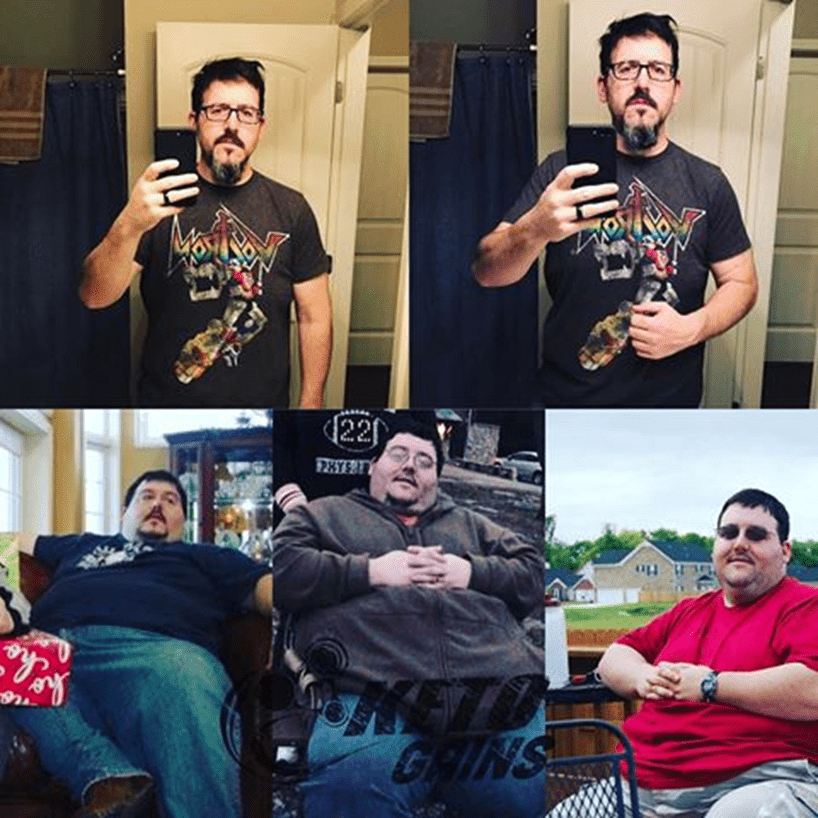


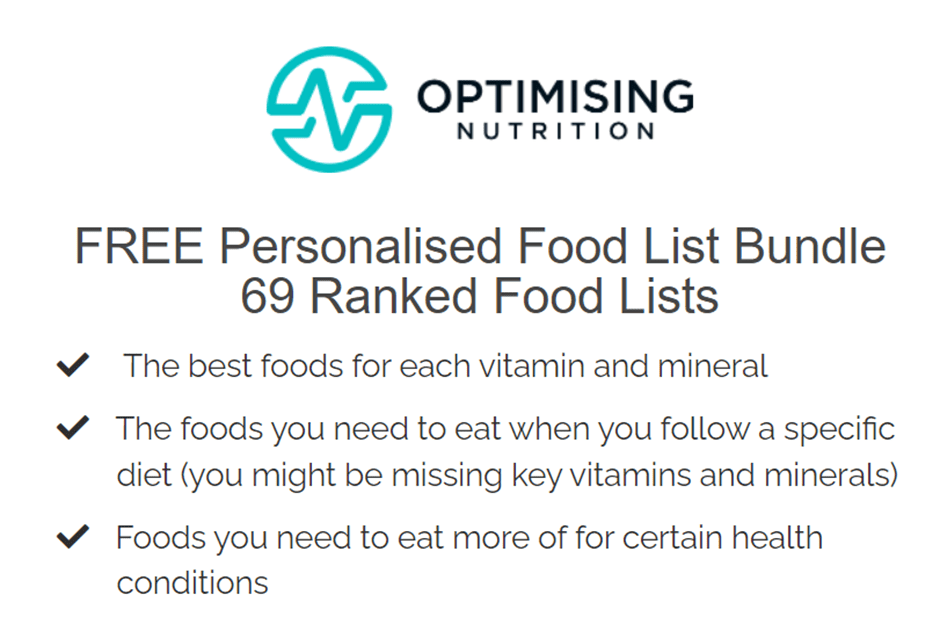


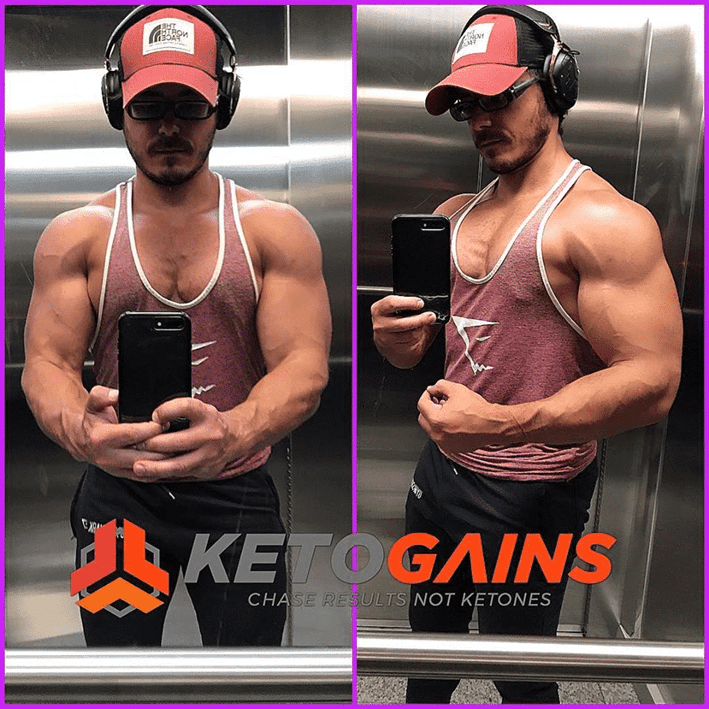
Thanks for this great article Marty!
cheers Wim!
Awesome as usual Marty 🙂
Thanks heaps!
Guys, you have to stop this ketogenics diet as a student of nutrtion. Yes, you will burn fat but you will also burn muscle, also, why putting your body to stress? None of the professionals recommend this diet,
1) Portein requierements go from 1.2 to 2 g/kg, higher levels could lead to renal insufficiency in long term. You don’t want a transplant.
2) Peripherical organs have a limit of ketogenics bodies,wich leads to cetonuria, wich drags water, minerals (this could lead you to death in extreme cases)
3) Ketoacidosis could lead you to death if you are diabetic.
3) Heart problems in the long term.
Go for 55/15/30 and eat as clean as posible, you don’t need to put your body to stress. Just limit sugar, saturated fats, trans, coleterol, and use compelx carbs with low GI.
I too studied Nutrition and in the past I would have agreed, but sadly what is being taught is not correct and you are being misinformed. All four of your points are based on old science and theories that have been disproved through current studies.
This is why I don’t pay “professionals” for nutrition advice as I know their education is antiquated, at least40 years behind current science, and based wholly on the sugar, corn, and soy lobbyists and the federal government’s influence on keeping companies like Cargill and Sysco happy or pushing their cattle/cereal grains and CAFO meat/dairy. Please do independent research on protein and kidneys, the differences between ketoacidosis vs nutritional ketosis, saturated fats etc. Mainstreamed trained nutritionists who advise doctors and patients directly are the problem. Their medieval ways of treating obesity in the Global North are especially backasswards and any doctor still prescribing insulin while NOT also mentioning how reducing processed carbs reverses 90% of T2D should be sued for malpractice. Also, my OBGYN recommended Clean Keto to reverse/cure multiple heath conditions. I thank my lucky stars that my GYN is also a Functional Medicine Practitioner. She saved my life and now I’m perfectly healthy and down to 24% body fat (DEXA)and no longer have sarcopenia.
What an outstanding article, thanks Marty. Love your clarity & logic lines (again). It so helps me make more sense of my study of this stuff.
But can’t help feeling that nutrition student’s comment above is soooo out of whack with reality its a great example of his being a victim of the crappy “science” dogma school of nutrition…!! His remarks are so loaded with overt falsifications and/or bad info.
My remarks are backed up by real books and people who studied this subjet, your’s by internet articles, but hey, it’s ok, i’t just my opinion
This is one of the best, most comprehensive articles I’ve come across. You touched on everything so elegantly! Thanks for putting it all together so succinctly. I love your site and all the practical info you offer. Thanks for distilling it so well.
Wow! Thanks so much Leeny! Gals you liked it.